First Drive: 2017 McLaren 570GT

The McLaren 570GT seems like an unusual diversion for the British supercar maker. Set alongside the spare, nimble 570S, the fighter jet 650S and the cruise missile 675LT, you might naturally assume this grand tourer is the softie of the bunch.
I approached the green-blue 570GT you see here with the same preconceptions. Over three days spent traipsing around L.A., romping through deserted California canyons, and scything up the coast to Monterey, the McLaren utterly decimated those notions.
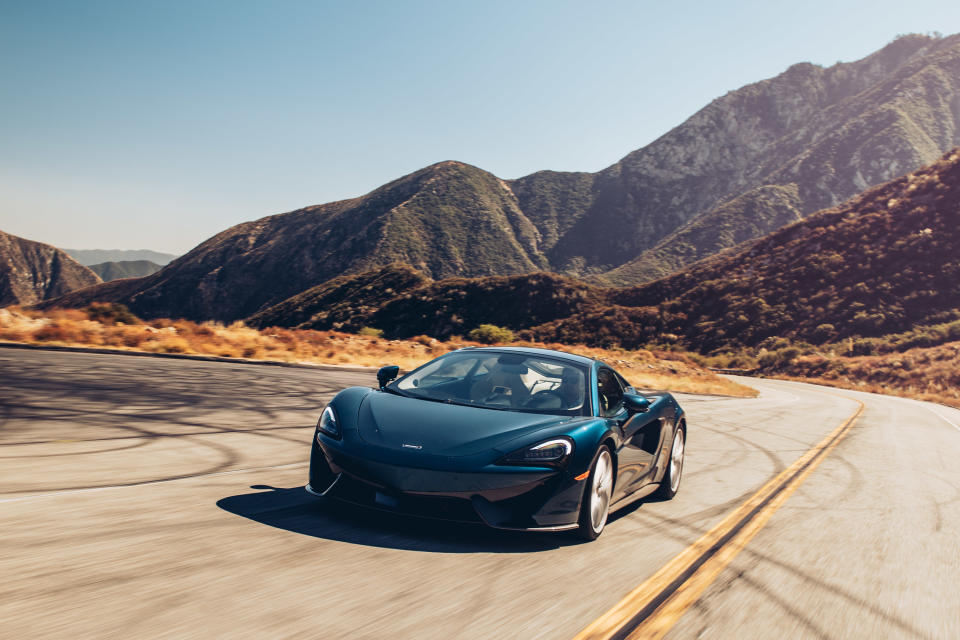
Consider McLaren's approach with the Sport Series lineup. Instead of starting with a grand tourer, then amping up the aggression with a subsequent sports model, McLaren kicked things off with the sharp-edged 570S. It's an engineer's strategy: Better to tone down some of the rawness of a true supercar than try to slim down and sharpen up an inherently compromised cruiser. Other automakers train an office manager to run a marathon; McLaren puts business clothes on an Olympian.
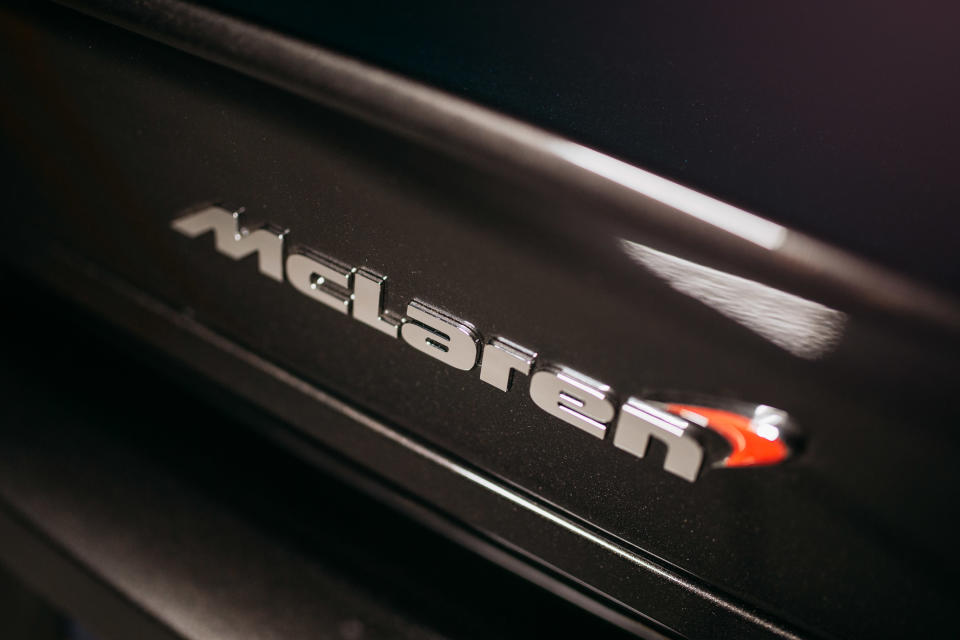
The payoff courses through your fingers and feet the moment you drive away. Even in the infuriating traffic crawl of downtown L.A., the McLaren feels special. The steering gear is two percent slower than the 570S, but the wheel still shivers over pavement heaves; the floor-hinged aluminum brake pedal, the best I've ever felt in a car with a license plate, gives a satisfying clack as your foot withdraws. There's even joy in fuel-saving stop-start mode, which treats your ears to the 3.8-liter twin-turbo V8's ripping whir every time it fires back up.
Like nearly every modern supercar, the 570GT is admirably capable as a daily driver. But that's not why anyone buys an as-tested $205,960 mid-engine carbon-fiber streak-even one that's been rearranged to offer a side-hinged rear cargo hold, Jaguar E-Type style, in addition to the deep front trunk.

No, it's out in California's sinewy canyons that the newest McLaren really makes sense. Switching drive settings feels like a jet pilot procedure: First, activate the control panel by hitting the "Active" button, then adjust the individual dials for chassis and drivetrain modes. Jam the Manual button while you're there. The shift paddles, column-mounted to allow push-pull upshifts and downshifts from either hand, are so wham-bang immediate, they make other automakers' paddles feel half-asleep. Or leave it in Auto-with the drivetrain mode dial set to Sport, the seven-speed dual-clutch is never in the wrong gear.
Sitting in a cream-colored leather-and-wool interior, made airy by the GT's full-length tinted glass roof, you anticipate some sort of dynamic penalty for the luxury. A little more roll in the turns, a moment's hesitation while a highway-friendly chassis gathers itself, would seem like a small tradeoff for a supercar that won't pummel you into calculating lease payments on a sane daily driver.

Bending the 570GT into the first sweeping turns of California's achingly perfect Highway 39, that tradeoff never comes. It takes a moment to wrap your head around it. The steering, light but firm, offers the same nuanced feedback as the 570S; the 562-horsepower engine serves up zero-lag thrust, riding a subdued but serious-sounding crescendo of sound. (Like all McLarens, the exhaust note stays the same no matter the drive mode. It's neither artificially hushed nor gussied up with contrived burbles, pops or backfires. It's just right.)
Make no mistake, this is no Rolls-Royce. The seats are thinly padded and, as my passenger pointed out more than once, barely recline before hitting the rear bulkhead. The GT offers a touch more sound deadening than the S, but pebbles kicked up by the 225/35/R19 front, 285/35/R20 rear Pirelli P Zero tires still make a hollow-sounding thwack on the carbon-fiber underbody. With no sun shade for the glass roof, the cockpit is a greenhouse under the California sun, and the infotainment system, a veiled Android tablet, lags maddeningly at times.
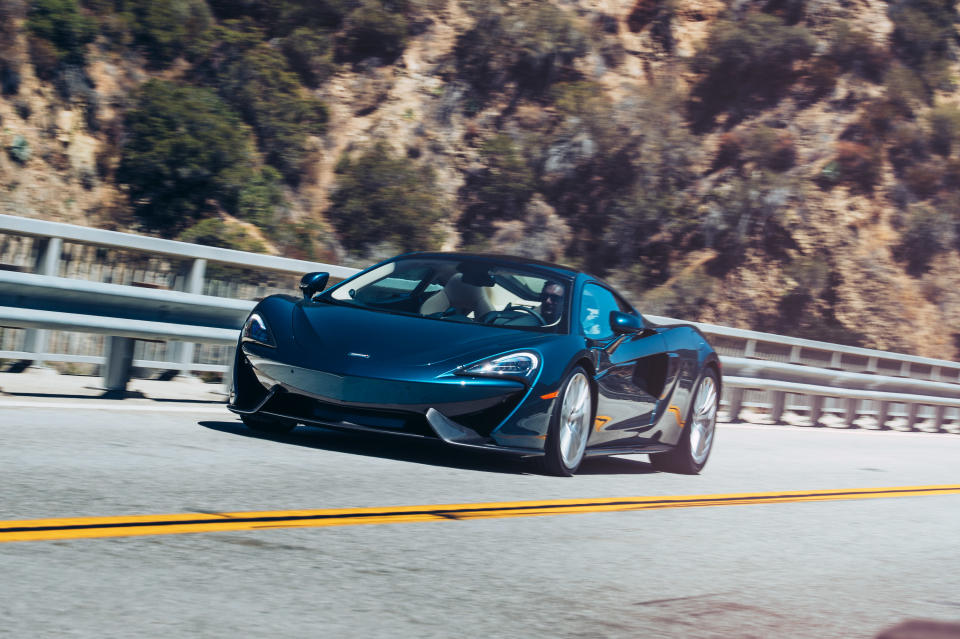
And that rear trunk: Seriously, who would try to hoist a carry-on through that piano-hinged opening, risking the paint on that wide (and often very warm) carbon fiber rear fender? Better, I think, to use it as a reach-back parcel shelf for purses or jackets. Or a place to stash your helmet between lapping sessions at a track day.
Yes, I'm suggesting that, should you come into possession of a 570GT, you should take it to the track.
Because despite the sensible tweaks that went into the GT-the slightly slower, friendlier-on-the-highway steering, the softer springs (by 15 percent up front, 10 percent in the rear), the iron brake rotors (carbon ceramics are optional), and the 124 lbs. added to the curb weight-the GT's public-road dynamics are every bit as sharp as the 570S. Yes, McLaren says the GT does 0-62 mph in 3.4 seconds, two tenths slower than the S. If the seat of your pants is calibrated to sense that difference, then you should have my job.
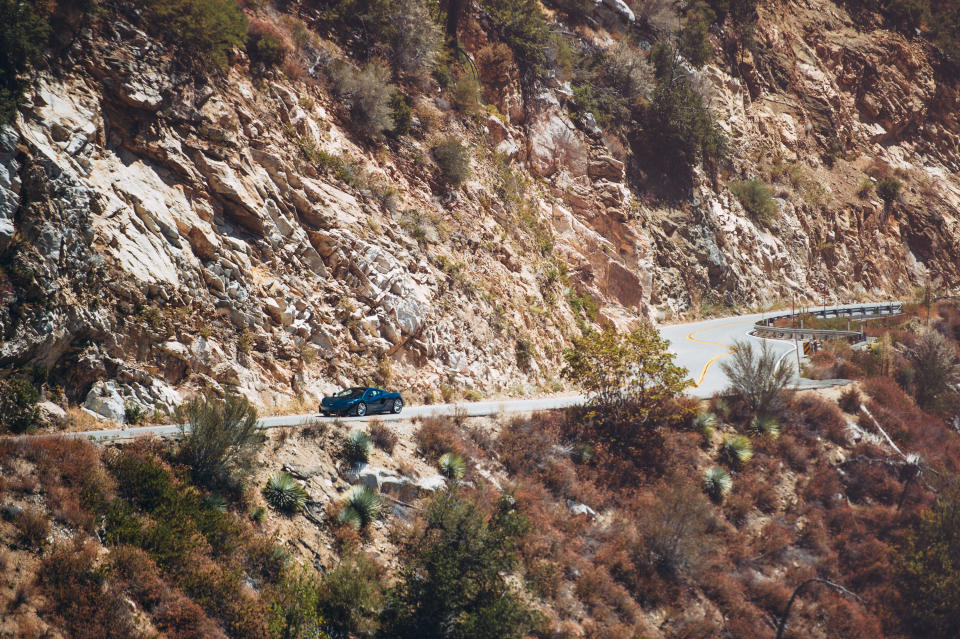
And if a 570S should grid up alongside you, say, at Summit Point? Who knows. Perhaps your slightly softer suspension will notch a miniscule disadvantage in the corners. Maybe the added weight of sound deadening and glass will sap some acceleration. My hunch is that the difference would be academic, only measurable with laboratory-like stringency, equally-skilled drivers and identical lapping conditions.
Barring that supremely unlikely scenario, the lucky 570GT buyer ends up with performance that, on the street, is damn near indistinguishable from the S. But where the S can sometimes feel thin-walled, nervous, claustrophobic or compromised, the GT does away with those shortcomings. On my last day with the Pacific Blue McLaren, my passenger and I drove more than 320 miles from L.A. to Monterey, through morning gridlock and midday temperatures pushing 100 degrees. At the end of our journey, despite driving a carbon-fiber exotic that could trounce a Ferrari F50, we were no worse for wear than if we'd driven a Range Rover.
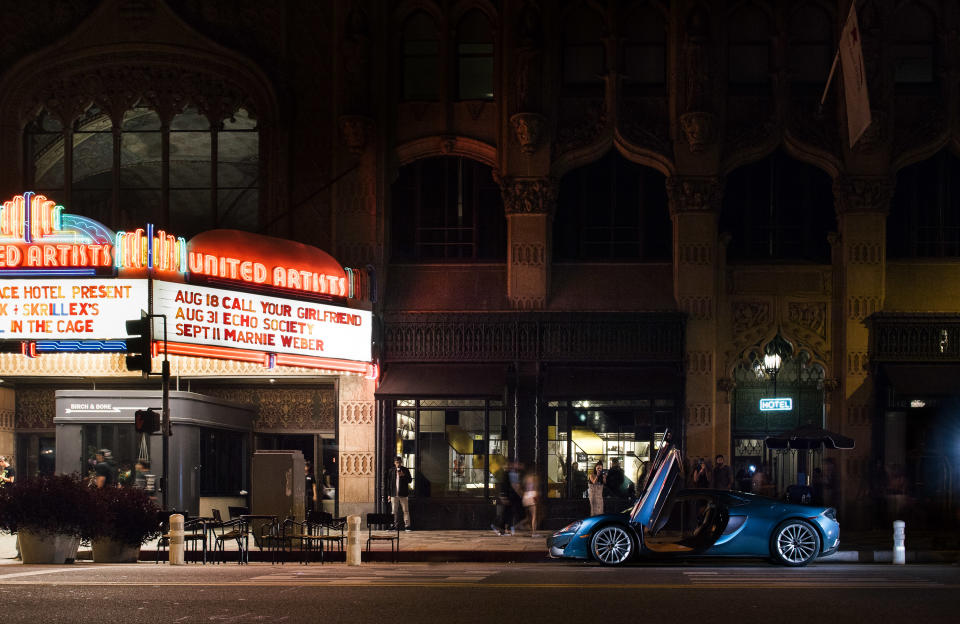
There are stripped-down, bored-out, lightweighted and decontented factory hot rods that we absolutely love-cars that peel away the gilding and luxury to show the inherent capabilities of the skeleton underneath. Admiring the 570GT takes nothing away from those bare-bones freak machines. But there's something perverse about paying more for getting less, especially in a car that's still hampered by the basic shortcomings of its mass-market engineering.
The 570GT abolishes that tradeoff. And sure, this is 2016: Any brand-new supercar you can buy will happily idle in traffic without overheating, correct for klutzy driving, or start up no matter the weather. Exotic two-seaters aren't the temperamental, fragile playthings they once were.
So why not take advantage of today's best engineering? Why not build a supercar that offers a modicum of comfort without penalizing performance? That's the engineer's solution. And that's exactly what McLaren has done.
You Might Also Like

 Yahoo Autos
Yahoo Autos 